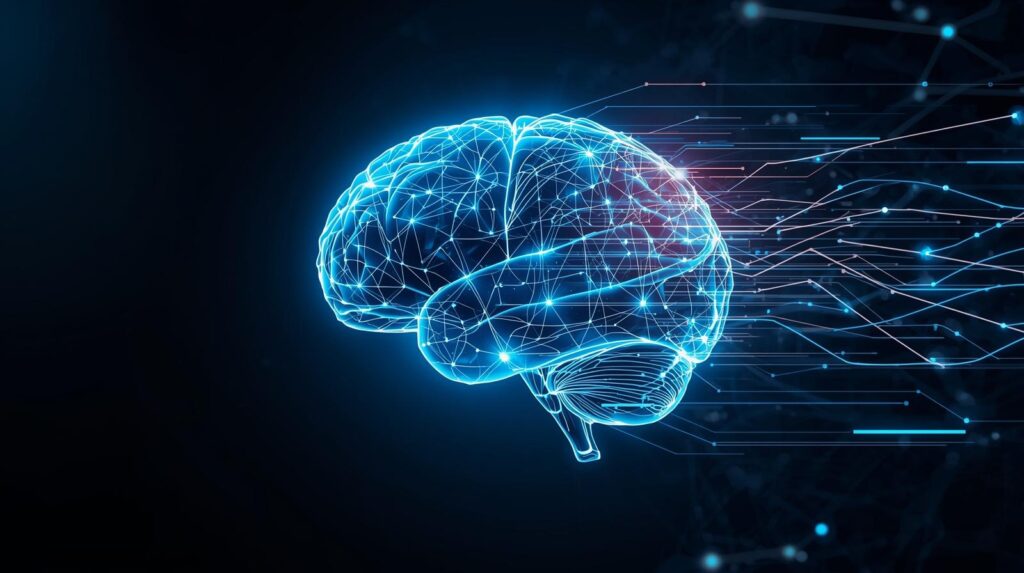Unlock Your Brain’s Full Potential: The Science of Rewiring for Success
In an increasingly demanding world, the quest for peak mental performance is more relevant than ever. We seek ways to sharpen our focus, enhance our memory, and maintain emotional resilience. While traditional methods like diet, exercise, and meditation are well-established, a revolutionary approach is gaining traction: Neurofeedback and Brain Training. These cutting-edge techniques offer a direct pathway to optimizing brain function, promising not just improvement, but a fundamental rewiring of your neural pathways for sustained excellence.
But what exactly are these methods, and how can they help you achieve a state of peak performance? This post delves into the science behind neurofeedback and brain training, exploring how they empower individuals to take control of their cognitive destiny and unlock unprecedented levels of mental acuity.
What is Neurofeedback? A Direct Line to Your Brain’s Activity
Imagine being able to see your brain’s electrical activity in real-time and, more importantly, learn to control it. That’s the essence of neurofeedback, a non-invasive therapeutic intervention often referred to as EEG biofeedback. It’s a sophisticated form of brain training that provides immediate feedback on your brainwave patterns, allowing you to consciously (or unconsciously) guide your brain towards more optimal states [1].
How Does It Work?
The process is remarkably intuitive:
- Measurement: Sensors, typically placed on your scalp, detect the electrical signals generated by your brain’s neurons. These signals manifest as brainwaves, which are categorized by their frequency and amplitude.
- Real-time Feedback: This brainwave activity is then translated into an understandable format, often displayed on a screen as a video game, a movie, or an auditory tone. For instance, if you’re training for focus, a car in a game might speed up when your brain produces the desired brainwave patterns (e.g., increased alpha waves associated with calm alertness).
- Operant Conditioning: Your brain, being an incredibly adaptive organ, quickly learns to associate these desired brainwave patterns with positive reinforcement (the car speeding up, a tone playing, etc.). Over time, this repeated feedback loop teaches your brain to self-regulate, leading to lasting changes in brain function and improved cognitive control [1].
The Language of Brainwaves
Our brains operate using a symphony of electrical rhythms, each linked to different states of consciousness:
- Delta waves: Associated with deep, restorative sleep.
- Theta waves: Linked to drowsiness, meditation, and creativity.
- Alpha waves: Indicate a state of relaxed alertness and calm.
- Beta waves: Dominant during active thinking, concentration, and problem-solving.
- Gamma waves: Involved in high-level processing and cognitive functions.
By targeting specific brainwave frequencies, neurofeedback can help individuals enhance desired mental states and reduce undesirable ones.
Brain Mapping (qEEG): A Personalized Blueprint
Many neurofeedback practitioners utilize quantitative electroencephalography (qEEG), or brain mapping, to create a personalized blueprint of an individual’s brain activity. This detailed assessment helps identify specific areas of the brain that could benefit from training, allowing for highly customized protocols and objective tracking of progress [1].
Brain Training: Sharpening Your Cognitive Tools
While neurofeedback directly influences brainwave activity, brain training (also known as cognitive training or mental exercise) encompasses a broader range of activities designed to improve cognitive functions. These often involve engaging games, puzzles, and exercises aimed at enhancing memory, attention, problem-solving, and processing speed. Unlike neurofeedback, traditional brain training typically doesn’t involve real-time brainwave measurement but relies on repeated cognitive challenges to stimulate neural pathways [1].
The Scientific Edge: Evidence for Rewiring Your Brain
The concept of rewiring your brain for peak performance isn’t science fiction; it’s grounded in the principle of neuroplasticity – the brain’s remarkable ability to reorganize itself by forming new neural connections throughout life. Both neurofeedback and brain training leverage this inherent capacity to foster lasting cognitive improvements [2].
Scientific research has increasingly validated the efficacy of neurofeedback across various domains, from clinical applications to cognitive enhancement in healthy individuals:
Cognitive Enhancement & Peak Performance
Studies show that neurofeedback can significantly improve cognitive functions crucial for peak performance:
- Attention and Focus: Research indicates neurofeedback’s potential to enhance sustained attention and concentration, making it a valuable tool for students, professionals, and athletes [3].
- Memory: A multi-level meta-analysis revealed that cognitive training with neurofeedback has beneficial effects on episodic, long-term, and working memory domains [4].
- Sports Performance: Athletes are increasingly using neurofeedback to gain a competitive edge, improving focus, reducing anxiety under pressure, and optimizing decision-making [5, 6]. By training specific brain states, athletes can enter
optimal performance zones more consistently.
Clinical Applications & Mental Well-being
Beyond peak performance, neurofeedback has demonstrated significant therapeutic potential in addressing a range of mental health conditions, leveraging brain plasticity to alleviate symptoms and improve overall well-being [2]:
- Anxiety and Depression: Alpha activity-based EEG neurofeedback has been shown to effectively reduce symptoms of depression, correlating with decreased global alpha activity in the left hemisphere. Similarly, fMRI neurofeedback targeting specific brain regions like the amygdala has yielded positive outcomes for anxiety and depression [2].
- ADHD: Neurofeedback is a well-researched intervention for Attention-Deficit/Hyperactivity Disorder (ADHD), helping individuals improve attention, reduce impulsivity, and enhance executive functions by training specific brainwave patterns [7].
- PTSD and Addiction: Both EEG and fMRI-based neurofeedback have shown promise in relieving symptoms of Post-Traumatic Stress Disorder (PTSD) and in supporting recovery from addiction by helping individuals regulate emotional responses and cravings [2].
Neurohacking Your Way to a Better Brain
The term neurohacking often refers to the practice of using various techniques, including neurofeedback and brain training, to optimize brain function and mental performance. It embodies a proactive approach to cognitive enhancement, moving beyond traditional treatments to actively sculpt the brain for desired outcomes. This isn’t about quick fixes, but about sustained, informed effort to leverage neuroplasticity for personal growth and improved mental acuity.
The Future is Now: Rewiring for a Brighter Tomorrow
Neurofeedback and brain training represent a paradigm shift in how we approach mental well-being and cognitive optimization. By offering a direct window into our brain’s activity and providing the tools to influence it, these methods empower individuals to become active participants in their own neurological development. Whether you’re an athlete striving for peak performance, a student aiming for academic excellence, or simply someone looking to enhance daily focus and emotional balance, the science of rewiring your brain offers a compelling path forward.
Embrace the future of cognitive enhancement and discover how you can unlock your brain’s extraordinary potential. The journey to peak performance begins with understanding, and now, with the power to rewire.
References
[1] Myndlift. (2023, March 30). The Ultimate Guide to Neurofeedback. Retrieved from https://www.myndlift.com/post/the-ultimate-guide-to-neurofeedback
[2] Loriette, C., Ziane, C., & Ben Hamed, S. (2021). Neurofeedback for cognitive enhancement and intervention and brain plasticity. Revue Neurologique, 177(9), 1133-1144. https://doi.org/10.1016/j.neurol.2021.08.004
[3] Loriette, C., Ziane, C., & Ben Hamed, S. (2021). Neurofeedback for cognitive enhancement and intervention and brain plasticity. Revue Neurologique, 177(9), 1133-1144. https://doi.org/10.1016/j.neurol.2021.08.004 (Cited for attention and focus)
[4] Matsuzaki, Y. (2023). The Effect of Cognitive Training with Neurofeedback on Memory Domains: A Multi-level Meta-analysis. PMC, 10048721. https://pmc.ncbi.nlm.nih.gov/articles/PMC10048721/
[5] Rydzik, Ł. (2023). The Use of Neurofeedback in Sports Training. PMC, 10136619. https://pmc.ncbi.nlm.nih.gov/articles/PMC10136619/
[6] Tosti, B. (2024). Neurofeedback Training Protocols in Sports: A Systematic Review. MDPI, 2076-3425/14/10/1036. https://www.mdpi.com/2076-3425/14/10/1036
[7] Arns, M., de Ridder, S., Strehl, U., Breteler, M., & Coenen, A. (2009). Efficacy of neurofeedback treatment in ADHD: the effects on inattention, impulsivity and hyperactivity: a meta-analysis. Clinical EEG and Neuroscience, 40(3), 180-189. https://pubmed.ncbi.nlm.nih.gov/19715053/


